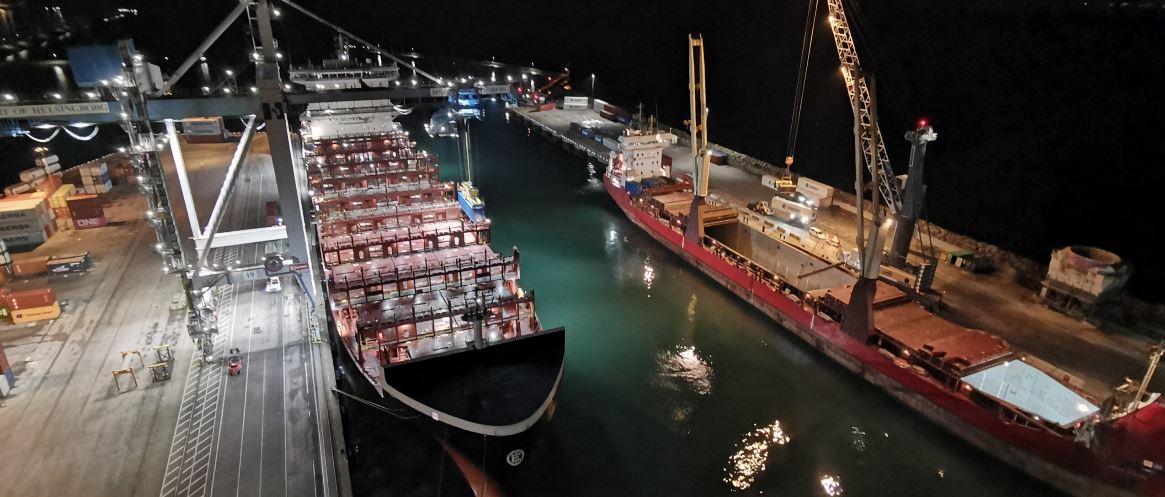 Port of Helsingborg is planning its first OPS (Onshore Power Supply) facility for container vessels, marking a significant step in the port’s longŌĆæterm ambition to achieve fossilŌĆæfree operations, according to the company's release.
Port of Helsingborg is planning its first OPS (Onshore Power Supply) facility for container vessels, marking a significant step in the port’s longŌĆæterm ambition to achieve fossilŌĆæfree operations, according to the company's release.
Commissioning is planned for autumnŌĆ»2026, and container vessels will be able to connect to electricity at berth in the Container Terminal using OPS technology.
“Becoming the first Port in Scandinavia to offer shore power for container vessels is a major milestone in our climate transition. It demonstrates our commitment to a fossilŌĆæfree future and strengthens our offer to shipping lines with high sustainability ambitions. With this investment, we are not only meeting future environmental requirements – we are leading the way,” says Bart Steijaert, CEO of Port of Helsingborg.
In 2019, the Environmental Permit Authority ruled that the Port of Helsingborg must be able to offer shoreŌĆæside power connections for container vessels within seven years.
With this new OPS facility, developed in partnership with Actemium, the Port will meet both that requirement and future technical demands.
The planned facility will have a capacity of up toŌĆ»3.5ŌĆ»megawatts – equivalent to the energy needs of a typical feeder container vessel and compliant with international standards.
The output is comparable to the simultaneous electricity consumption of approximatelyŌĆ»2,000 residential homes. OPS technology allows vessels to shut down their auxiliary engines while berthed and instead use electricity from the local grid.
This drastically reduces emissions of carbon dioxide, nitrogen oxides, sulphur oxides, hydrocarbons and particulate matter. In the future, the climate and air quality benefits could add up to savings of as much asŌĆ»8,000ŌĆ»tonnes of COŌéé,ŌĆ»100ŌĆ»tonnes of NOŌéō and up toŌĆ»5ŌĆ»tonnes of SOŌéō annually.
At the same time, the working environment improves for both crew and port personnel – with quieter operations and cleaner air.
Electrically powered vessels, such as Svitzer’s new hybrid tugboat, are already entering operations at the Port. OPS will become a natural part of that growing infrastructure.
Starting in 2030, the European Union will require larger vessels to use shore power while at berth. Port of Helsingborg’s investment is therefore aligned with both national climate goals and upcoming European regulations.
For shipping lines focused on reducing emissions, access to OPS will be an increasingly important factor in port selection.
The first facility will be installed at the quay in the Container Terminal, where both the power infrastructure and vessel traffic make it wellŌĆæsuited for the technology.
Port of Helsingborg already offers shore power for ferries in the City Port and is now preparing to expand capacity for the container segment.
OPS may not be the solution for every vessel type, but for those with onboard compatibility, the environmental benefits can be significant.
Previously, Sweden had focused OPS deployment on ferries and roŌĆæpax vessels, notably in ports such as Gothenburg; container vessel OPS is less common in Sweden but already established in ports in the US, making this containerŌĆæsegment project at Helsingborg relatively pioneering.
Port of Helsingborg Port of Helsingborg is a municipally owned port authority and terminal operator located in Helsingborg, Sweden. It is the country’s secondŌĆælargest container port handling approximately 275,000 TEUs annually and over seven million tonnes of cargo (2023). The port manages operations across North Harbour, West Harbour and South Harbour and is responsible for infrastructure, terminal services and regulatory compliance.



